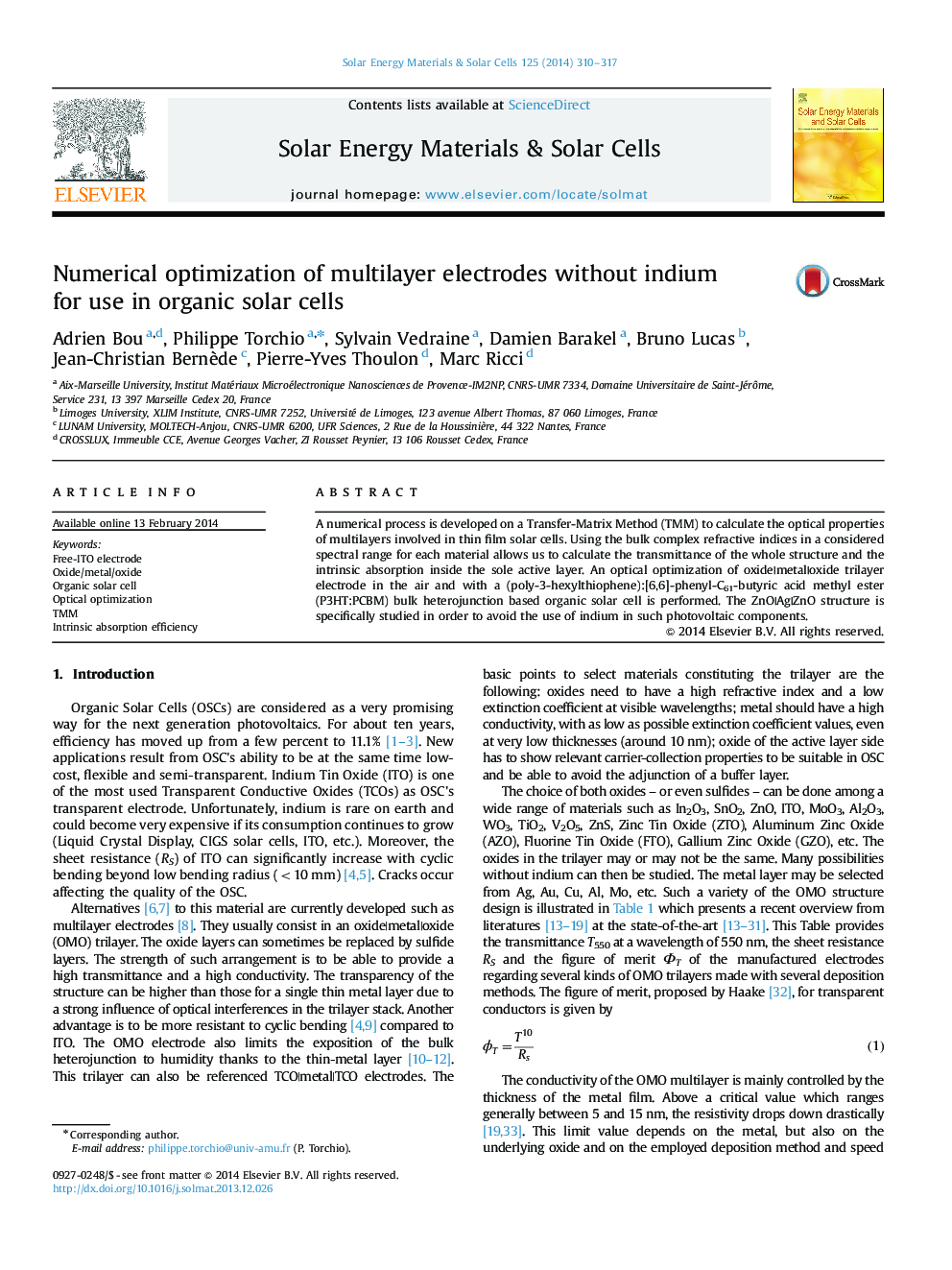| Article ID | Journal | Published Year | Pages | File Type |
|---|---|---|---|---|
| 78118 | Solar Energy Materials and Solar Cells | 2014 | 8 Pages |
•Optimal thicknesses of multilayers are determined by a TMM numerical method.•Intrinsic absorption efficiency is calculated by considering the embedded media.•ZnO|Ag|ZnO structure is optically optimized in air and as electrode for OSC.•There is a possible influence of Ag diffusion and morphology on optical properties.
A numerical process is developed on a Transfer-Matrix Method (TMM) to calculate the optical properties of multilayers involved in thin film solar cells. Using the bulk complex refractive indices in a considered spectral range for each material allows us to calculate the transmittance of the whole structure and the intrinsic absorption inside the sole active layer. An optical optimization of oxide|metal|oxide trilayer electrode in the air and with a (poly-3-hexylthiophene):[6,6]-phenyl-C61-butyric acid methyl ester (P3HT:PCBM) bulk heterojunction based organic solar cell is performed. The ZnO|Ag|ZnO structure is specifically studied in order to avoid the use of indium in such photovoltaic components.
Graphical abstractOptimization of the calculated intrinsic absorption efficiency inside the active layer by varying the (x, y) thicknesses in the structure: Glass|ZnO (x nm)|Ag (14 nm)|ZnO (y nm)| P3HT:PCBM (180 nm)|Ag (80 nm).Figure optionsDownload full-size imageDownload as PowerPoint slide
